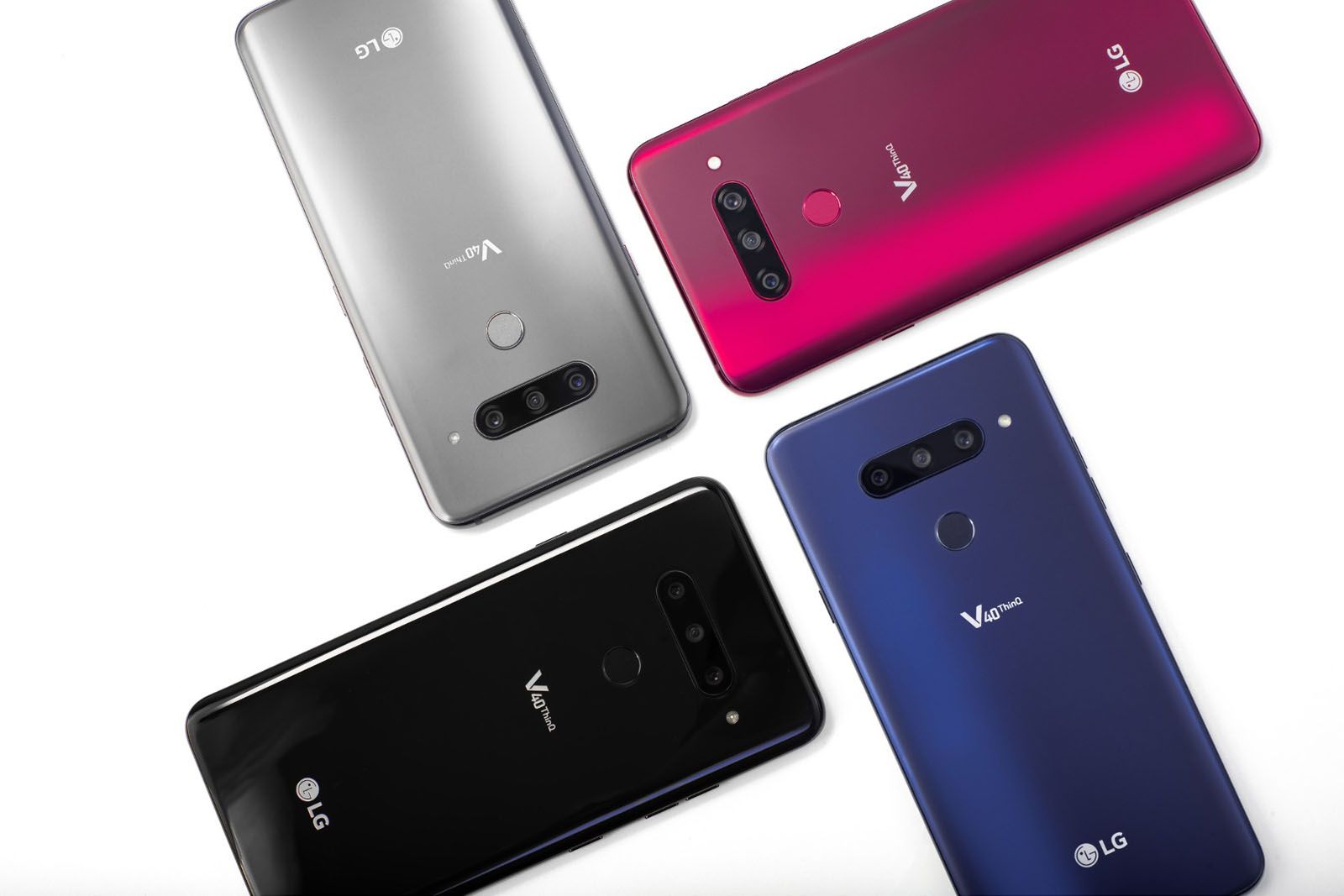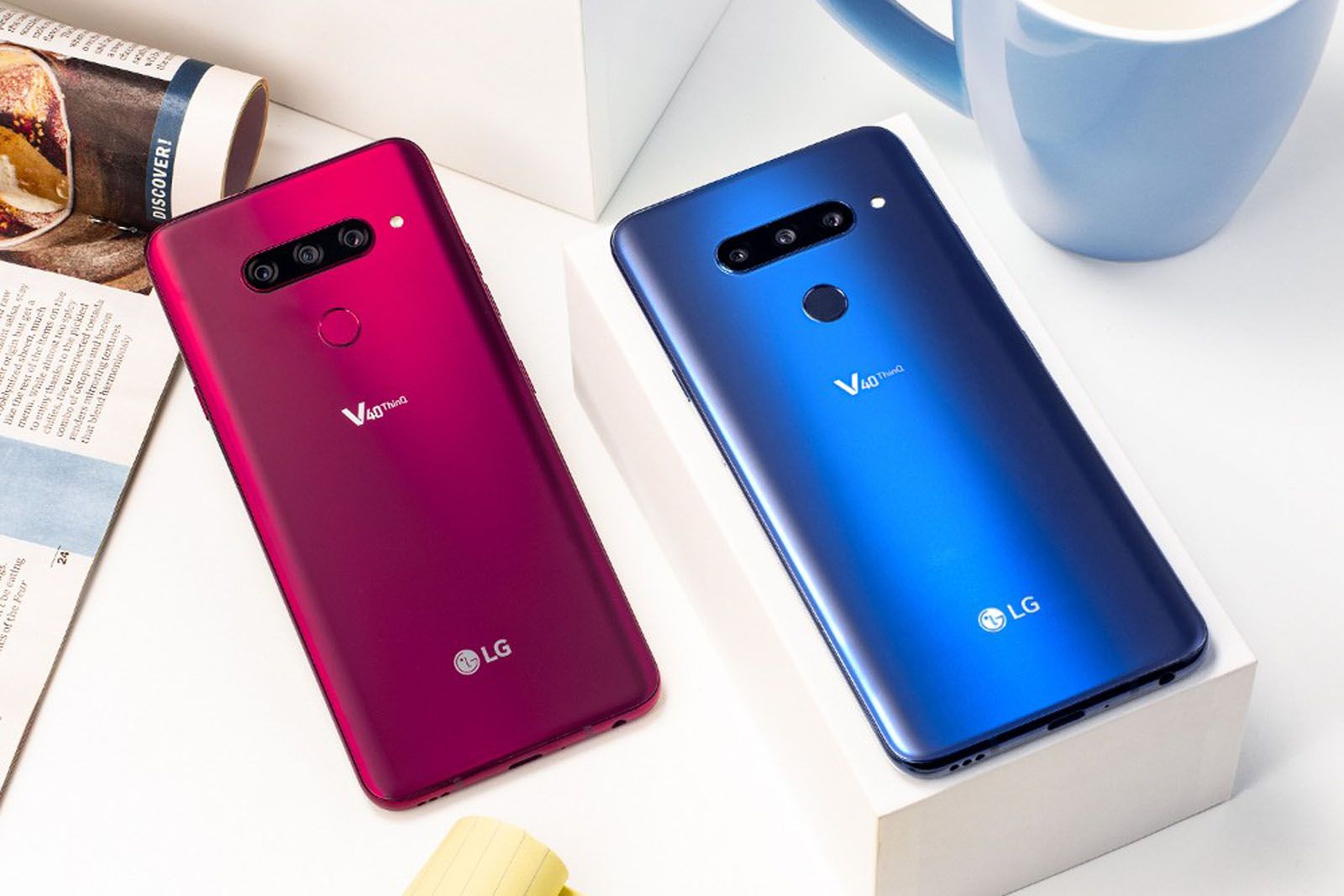LG typically launches two big devices a year - the G series (the latest of which is the LG G7) and the V series, which has now seen the launch of the LG V40 ThinQ.
Here's everything you need to know about LG's latest and greatest handset.
LG V40 ThinQ price and release date
- Announced on 3 October
- Pre-orders open 11/12 October
- General availability 19 October
- $900-1000 price range
The LG V40 ThinQ was announced on 3 October in New York. Pre-orders will start on 12 October across major US carriers, with Verizon getting a day head start, from 11 October.
General availability (outside of pre-orders) is expected around 19 October. This is currently all for the US, there is no word on UK or European availability and there's no word on SIM free availability.
The price is expected to be in the region of $900-1000 dollars - but we'll update with more accurate pricing and wider availability once that becomes known.
LG V40 design
- 158.7 x 75.8 x 7.7mm, 169g
- Silky Blast glass back
- IP68 waterproofing
The LG V40 follows many of the design lines laid down by the LG G7, shifting the aspect of the display to 19.5:9, for a front that's almost bezel free, with a notch to the top of the phone.
The rear of the phone is tempered glass, but LG is using a technique it is calling Silky Blast to give it texture and grip - so it has a matte finish and isn't slippery like many glass phones. The LG V40 comes in four colours - New Aurora Black, New Platinum Gray, New Moroccan Blue and Carmine Red, although the availability of these colours may be limited by region or carrier.
The LG V40 continues LG's trend of waterproofing, with and IP68 rating against dust and water ingress. LG also says that it meets MIL-STD 810G drop testing standards - although it's long made this claim and these phones will still break if you drop them.
Overall, the size o the LG V40 is pretty much the same as the iPhone XS Max, slightly more compact than the Samsung Galaxy Note 9.
LG V40 ThinQ display
- 19.5:9 notches design
- 6.4-inch OLED display
- 3120 x 1440 pixels, 538ppi
Both the LG V30 and the LG V35 ThinQ feature a large 6-inch OLED display with a 18:9 aspect ratio and a 2880 x 1440 resolution - but the V40 steps things up.
The LG V40 ThinQ takes advantage of the notched display design to push the display space larger without swelling the phone's body excessively. That results in a 6.4-inch display - rivalling that of the Samsung Galaxy Note 9 and iPhone XS Max.
The resolution moves up in the QHD+ stakes to 3120 x 1440 pixels, for a pixel density of 538ppi, packing in a lot of pixels. That should mean its technically better equipped to show finer details than lesser phones. This is an OLED display.
LG V40 ThinQ gets three rear cameras
- Main rear: 12MP, f/1.5, 1.4µm pixels, 78°
- Wide-angle rear: 16MP, f/1.9, 1µm pixels, 107°
- Zoom rear: 12MP, f/2.4, 1µm pixels, 45°
- Dual front cameras, standard and wide
The LG V series has often been known for its high standards when it comes to photography and videography. LG has often pushed this as a phone for content creators, although with the launch of the V30, it changed the language slightly to make it appeal to anyone who wanted a big flagship phone.
But the camera focus remains and LG has included three rear cameras. The setup is arguably better presented than the Huawei P20 Pro, because each of the cameras has a distinct function - there's normal, zoom and wide-angle cameras - rather than just piling in more lenses for data capture, or monochrome, or to loosely increase detail.
The important points are the main camera has a large aperture and big pixels, so should be good for low light. That drops a little for the other two cameras, so we suspect those will only really do well in bright conditions. The three cameras can capture together allowing you to choose the picture you like, and you can even get a video to move from wide to zoom, which is fun.
On the front, LG gives you two cameras, meaning you can have regular selfies or wide angle selfies - without the need to move the phone or anything else.
The wide-angle lens remains the thing that LG pretty much dominates - zoom is common on phones now, but wide angle is slightly more unique. LG is also leveraging the AI Cam to boost the camera's potential is automatic scene recognition and optimisation.
LG V40 ThinQ hardware
- Qualcomm Snapdragon 845
- 6GB RAM and 64GB storage + microSD
- 3300mAh battery
- Strong audio credentials
The LG V35 ThinQ sits on the Qualcomm Snapdragon 845, coupled with 6GB of RAM. The V40 ThinQ follows this, with options of 64 or 128GB internal storage and microSD for expansion. That will mean plenty of power and storage flexibility. There's a 3300mAh battery which isn't huge in a device of this size - but we've seen reasonable results from devices of this capacity recently.
What LG is putting a strong focus on is audio quality. The V40 ThinQ retains the 3.5mm headphone socket, but also adds the Boombox from the LG G7, designed to boost the bass experience of the on-board speakers. The V40 is tuned by Meridian for better quailty audio, part of an ongoing partnership between LG and the audio firm, with a 32-bit DAC onboard too.
LG V40 ThinQ software
- ThinQ means AI
- Android Oreo
- Some LG tweaks
The LG V40 has the addition of "ThinQ" in the name, meaning that this has some additional AI aims. Mostly that's manifested in the AI Cam, but it forms part of the story that LG is pushing about AI bringing changes rather than pure hardware.
Aside from AI, the LG V40 ThinQ launches on Android Oreo, but with the normal range of additions that LG like to add to phones. Whether there will be an update to Android Pie remains to be seen.


